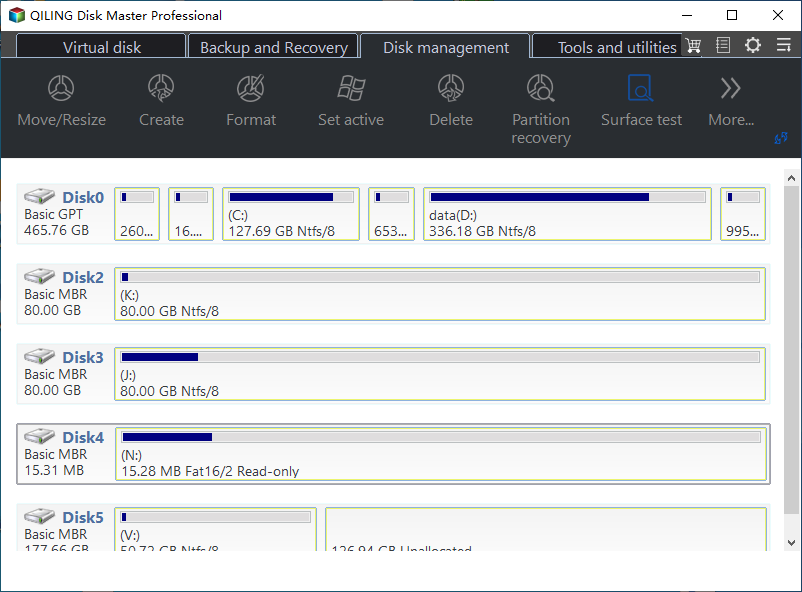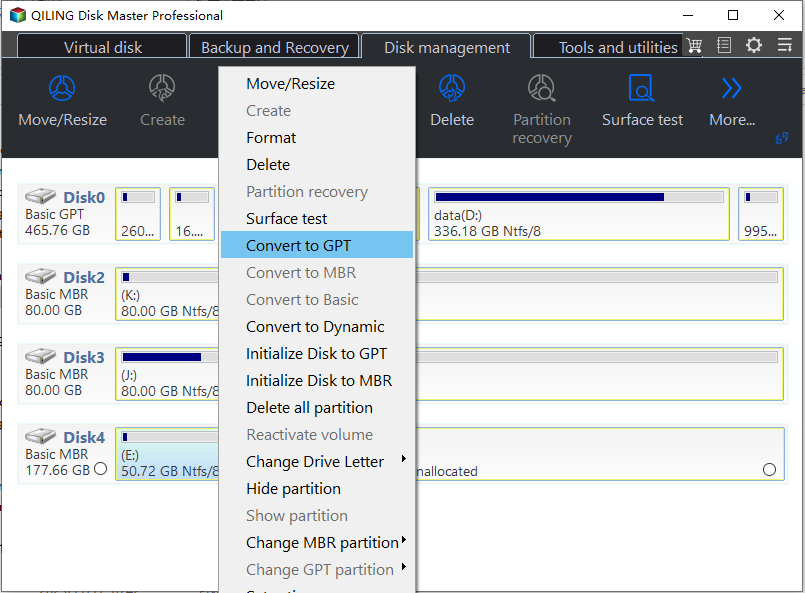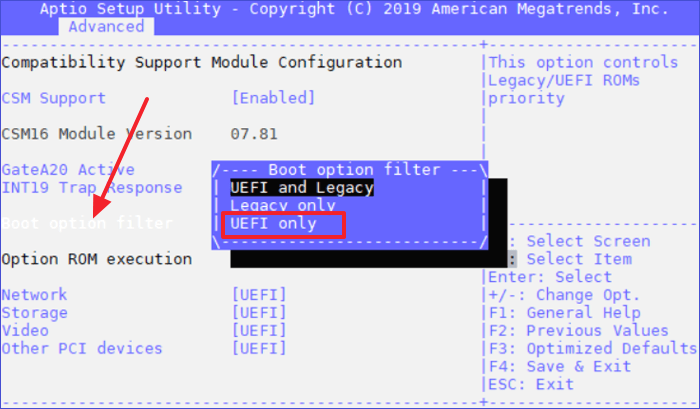Guide on Converting MBR to UEFI [Safe Guide for Beginners]
Transitioning from MBR to UEFI might seem like a daunting task at first but it enhances your system's performance and compatibility. To address the hurdles that you might face on the way that's why we have prepared a detailed, step-by-step guide to assist you through the process, catering to both tech experts and non-tech-savvy users.

While the technicalities of converting from MBR to UEFI may initially appear complex, our guide is here to simplify the process, making it accessible to users with varying levels of expertise. To start, it is imperative to check whether your system's motherboard supports UEFI mode. This fundamental step ensures a smooth and successful transition. Once you've confirmed UEFI compatibility, we can proceed to the subsequent steps.
Now, let's learn about the procedure that will assist you in transitioning MBR to UEFI.
#1. Download MBR Disk Converter Software
Having the right tools in your hand plays a major role in this transition process. For Windows users, Qiling Disk Master Professional is the way to go as it is the most reliable tool, and its easy-to-use interface makes it the tool of choice. Its powerful features make it your best companion when it comes to converting MBR to UEFI.
Qiling Disk Master's stellar Disk Converter is specifically designed to make this transition seamless. Its interactive design makes sure that non-tech-savvy users can easily navigate through this process effortlessly.
Don't forget to share this MBR to UEFI conversion tool online to help more of your friends who need help of switching their MBR disk drive with OS to UEFI mode:
#2. Convert MBR to Support UEFI
Now that we've laid the foundation for understanding the language of your computer - MBR for Legacy boot mode and GPT for UEFI - let's delve into the pivotal step of converting your MBR disk to support UEFI.
- In the intricacy of computer systems, the MBR disk speaks the language of Legacy boot mode, a method rooted in tradition. However, for those seeking to embrace the contemporary UEFI mode, a translation is in order.
- The GPT disk, fluent in the modern UEFI dialect, becomes the key to unlocking advanced functionalities and staying in sync with the latest technological advancements.
To bridge this linguistic gap and enable your system to converse effortlessly in UEFI, converting your MBR disk drive to the GPT partition style is imperative. Qiling Disk Master enables you switching MBR disk to GPT without losing any data with the step guide here:
Step 1. Download and launch Qiling Disk Master on your computer.
Step 2. Go to Disk Converter, select "Disk management" tab page.

Step 3. Right-click the target MBR disk that you tend to convert to GPT, and click "Convert to GPT" to start the conversion.
This transformation serves as the passport to the UEFI realm, ensuring compatibility and unlocking your system's full potential. So, let's embark on this conversion journey, where your MBR disk evolves into a GPT powerhouse, ready to support UEFI mode seamlessly.
For an OS drive, you still have one last step go move, which is to enable the UEFI mode on the source OS disk that was converted to GPT with the above guide. Move to the next part, and check for the details.
#3. Enable UEFI Mode
Now that you've successfully converted your MBR disk to the UEFI-friendly GPT partition style, the next pivotal step is to enable UEFI mode in your system. This step ensures your system fully capitalizes on the benefits of the modern UEFI environment.
Step 1. Power on or restart your computer.
Step 2. Access the BIOS setup by pressing the designated key during the initial boot process (common keys include F2, F10, F12, or DEL).
Step 3. Navigate to the "Boot" or "Boot Options" section within the BIOS menu using the arrow keys.
Step 4. Select UEFI as the preferred boot mode.

Step 5. Save your changes and exit the BIOS by navigating to the "Save & Exit" menu, usually found in the last tab of the BIOS interface.
A significant step in the conversion process, enabling UEFI mode optimizes your system for better performance and compatibility with contemporary technologies. You've made sure that your computer is now prepared to utilize UEFI to the fullest extent possible by following these easy steps. The journey continues with your system poised for a more advanced and efficient computing experience.
This is the complete procedure of converting MBR to UEFI, and you love it, don't hesitate to share this tutorial page to help more of your friends online:
Conclusion
In conclusion, this guide has navigated you through the intricate process of converting your MBR disk to support UEFI, transforming your system into a more advanced and efficient computing powerhouse. Qiling Disk Master, as a user-friendly solution for Windows beginners, is equipped with the Disk Converter feature and has become your go-to companion for the seamless transition from MBR to UEFI mode.
Converting an MBR disk to GPT is only the beginning of switching the MBR disk to UEFI mode. The key procedure is to enable the UEFI boot mode for the GPT from the BIOS as the provided guide shown above.
FAQs Of Converting MBR to UEFI
If you still have further questions about configuring the MBR disk to UEFI boot mode on your PC, check and find answers here blow:
1. Can MBR run UEFI?
No, MBR and UEFI are distinct boot modes that are incompatible with one another. MBR is associated with Legacy boot mode, whereas GPT (GUID Partition Table) is required for UEFI. Converting from MBR to UEFI is necessary to harness the benefits of UEFI.
2. Can I convert MBR to UEFI without losing data?
Yes, converting MBR to UEFI without losing data is possible, but caution is essential. Utilizing reliable partition management software, such as Qiling Disk Master, allows for a seamless conversion while preserving your data. Always ensure a backup before initiating any major disk conversion to mitigate potential risks.
3. Can I convert a VM to UEFI?
Yes, converting a virtual machine (VM) to UEFI involves adjusting settings in your virtualization software. Power off the VM, access settings, change the boot mode to UEFI, and ensure the disk uses the GPT partition style. Save changes and start the VM. Specific steps may vary by virtualization platform, so consult your software's documentation. Always back up your VM before making significant changes to prevent potential data loss.
Related Articles
- How to Partition SSD Safely in 2024 | Complete Guide
- How to Tell If a Hard Drive Is Corrupted (with Pictures)